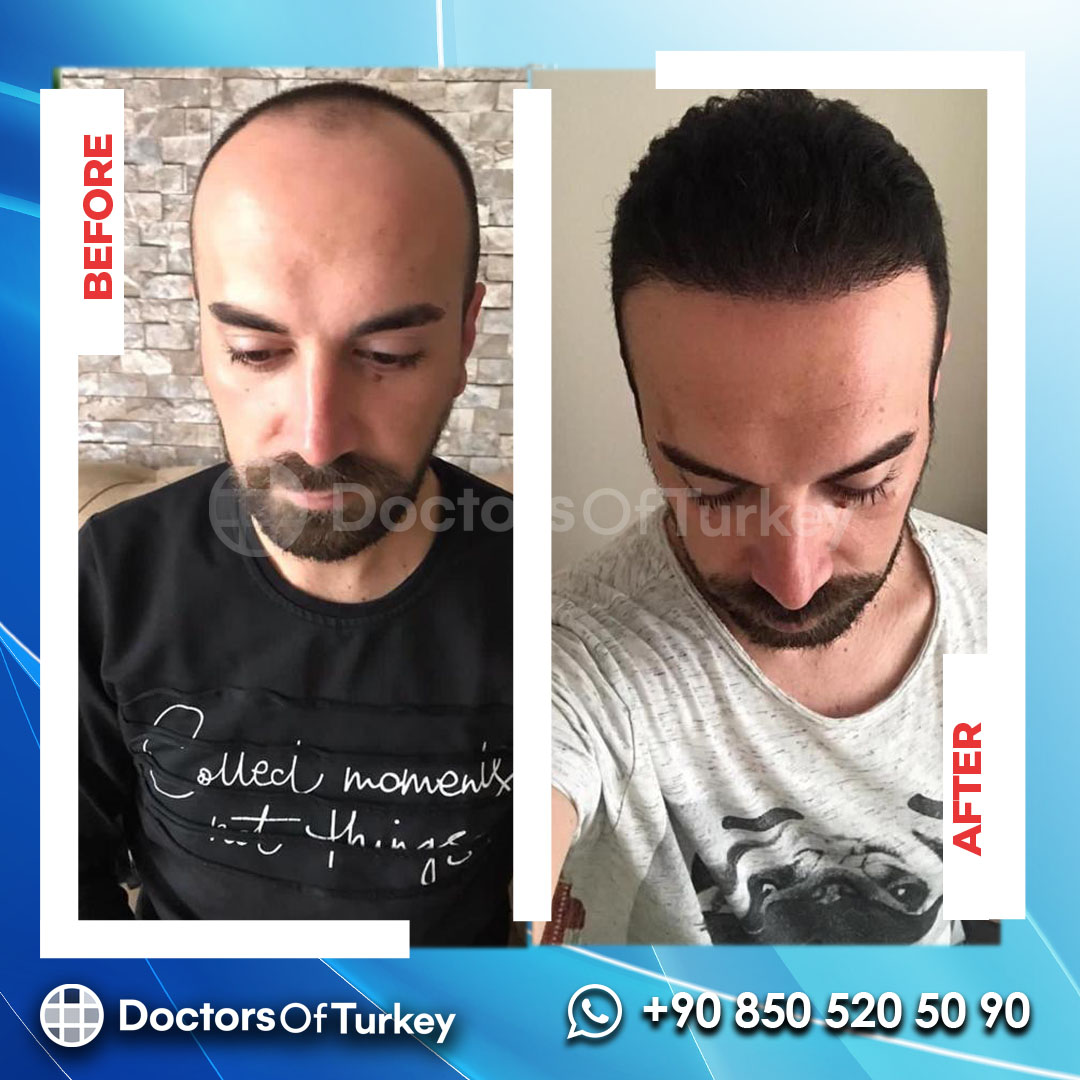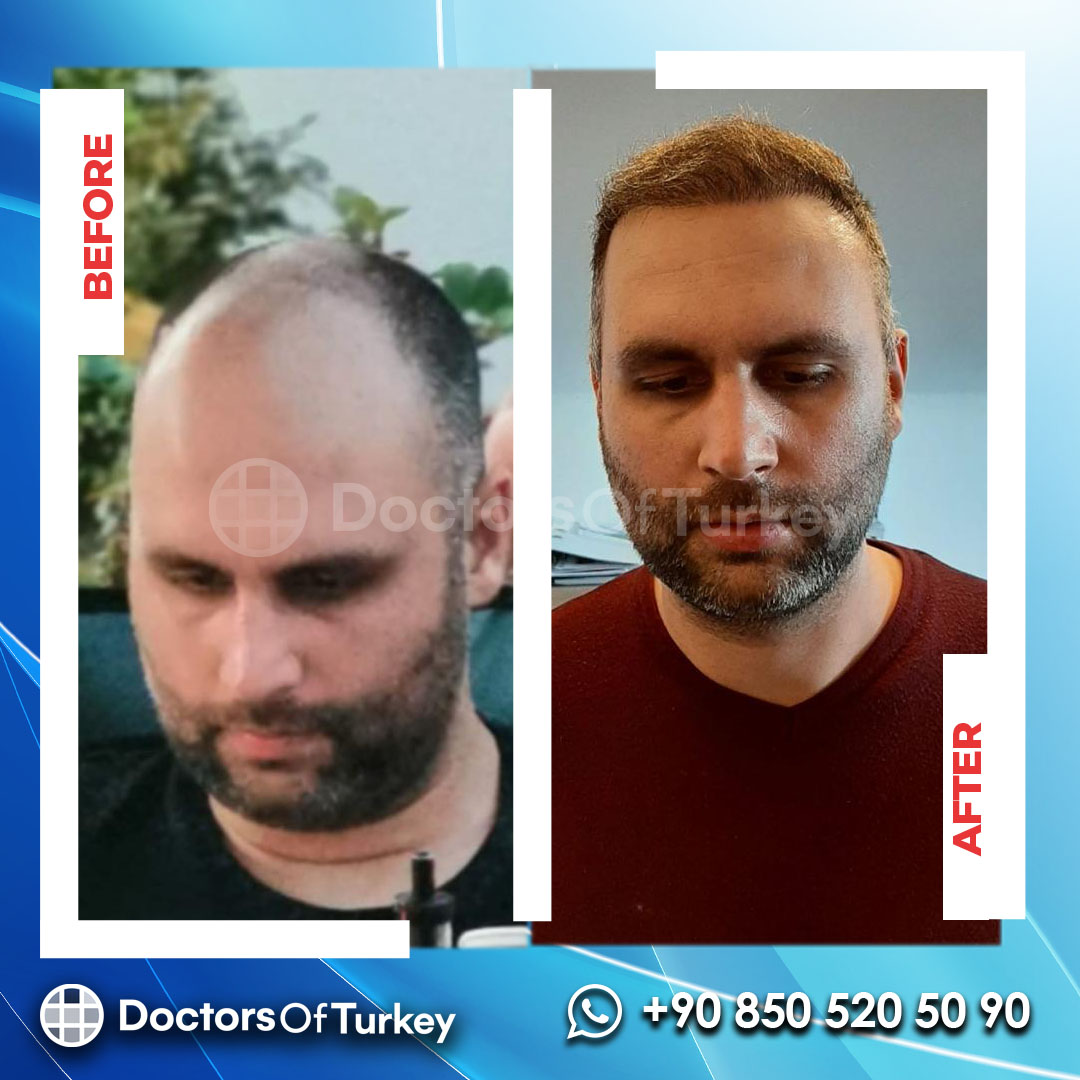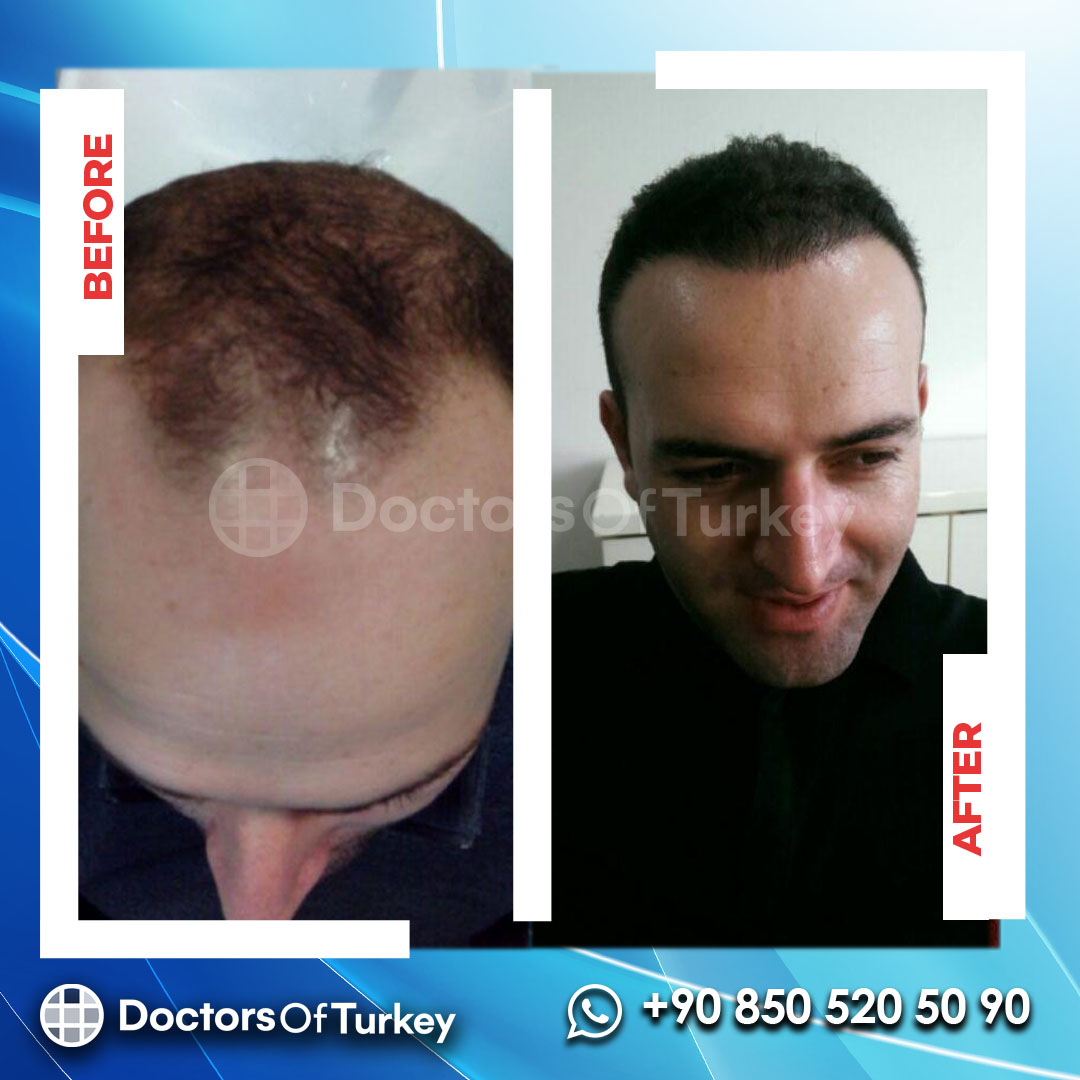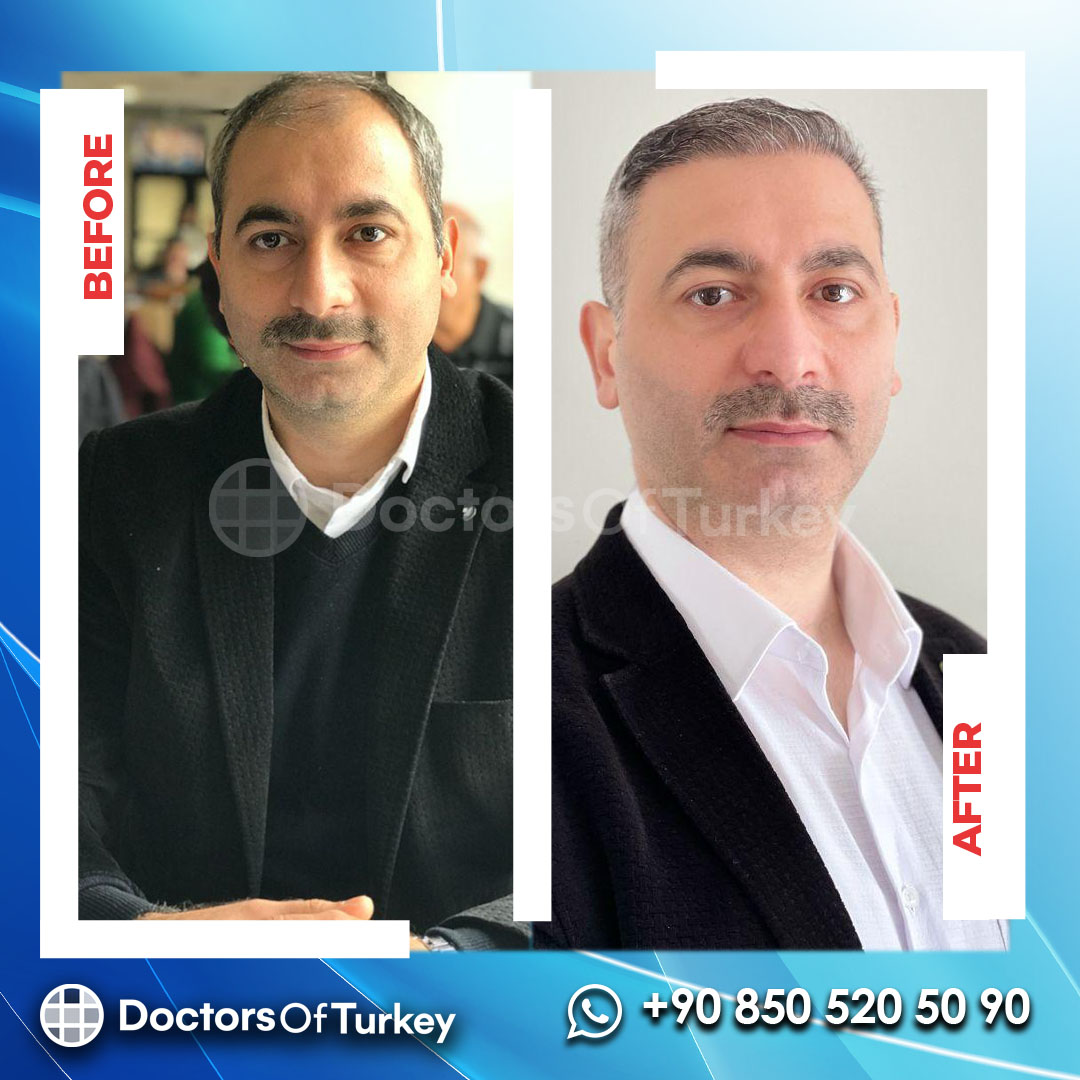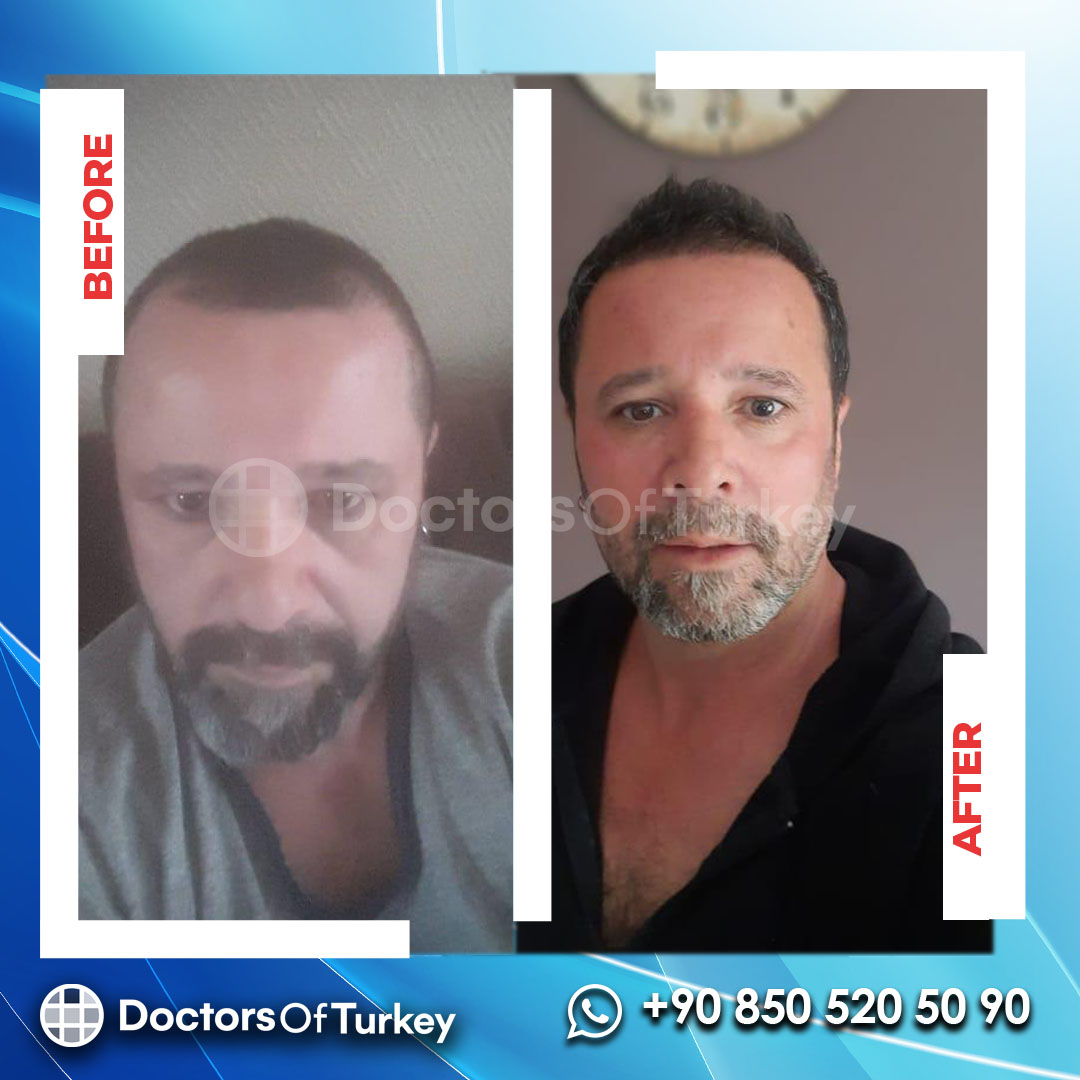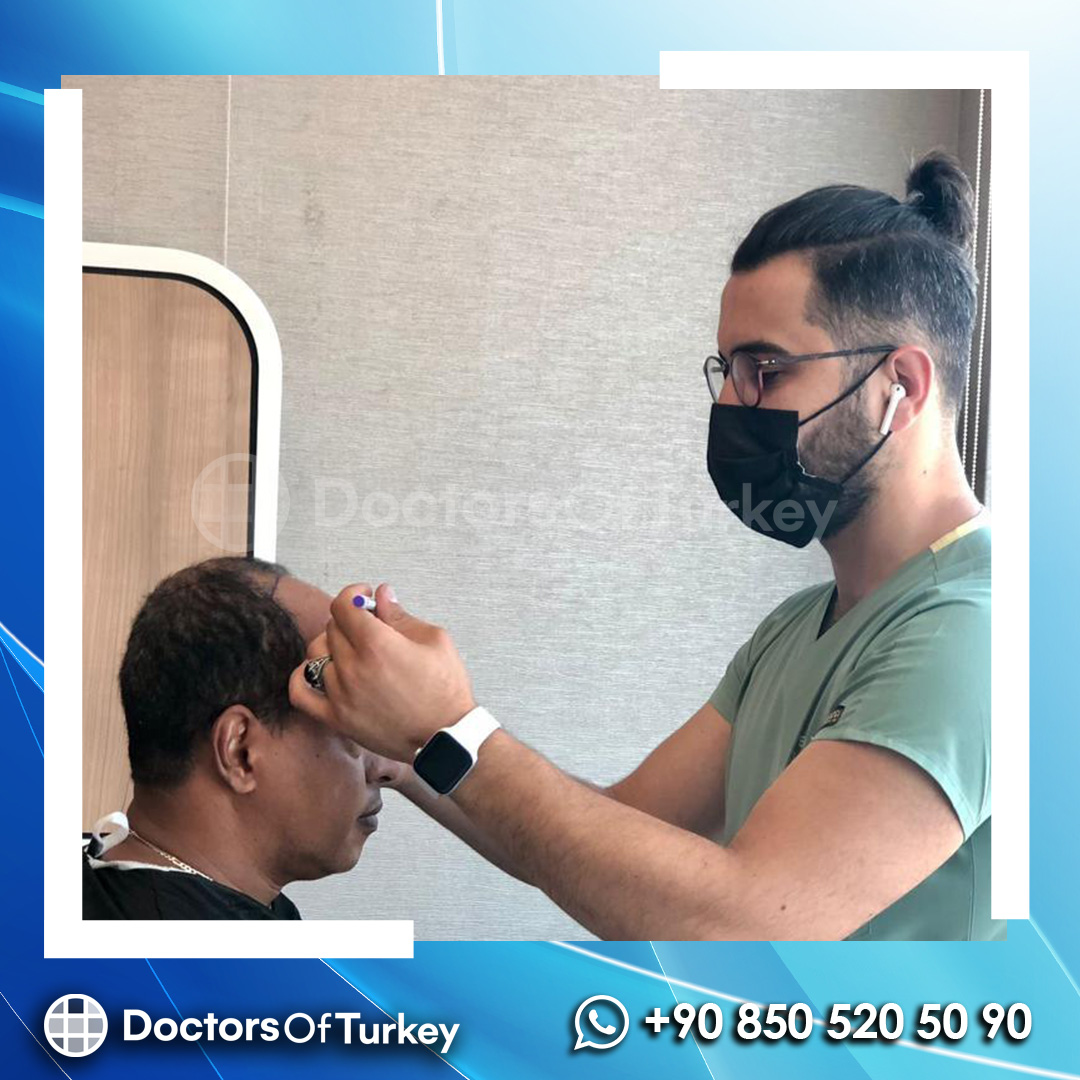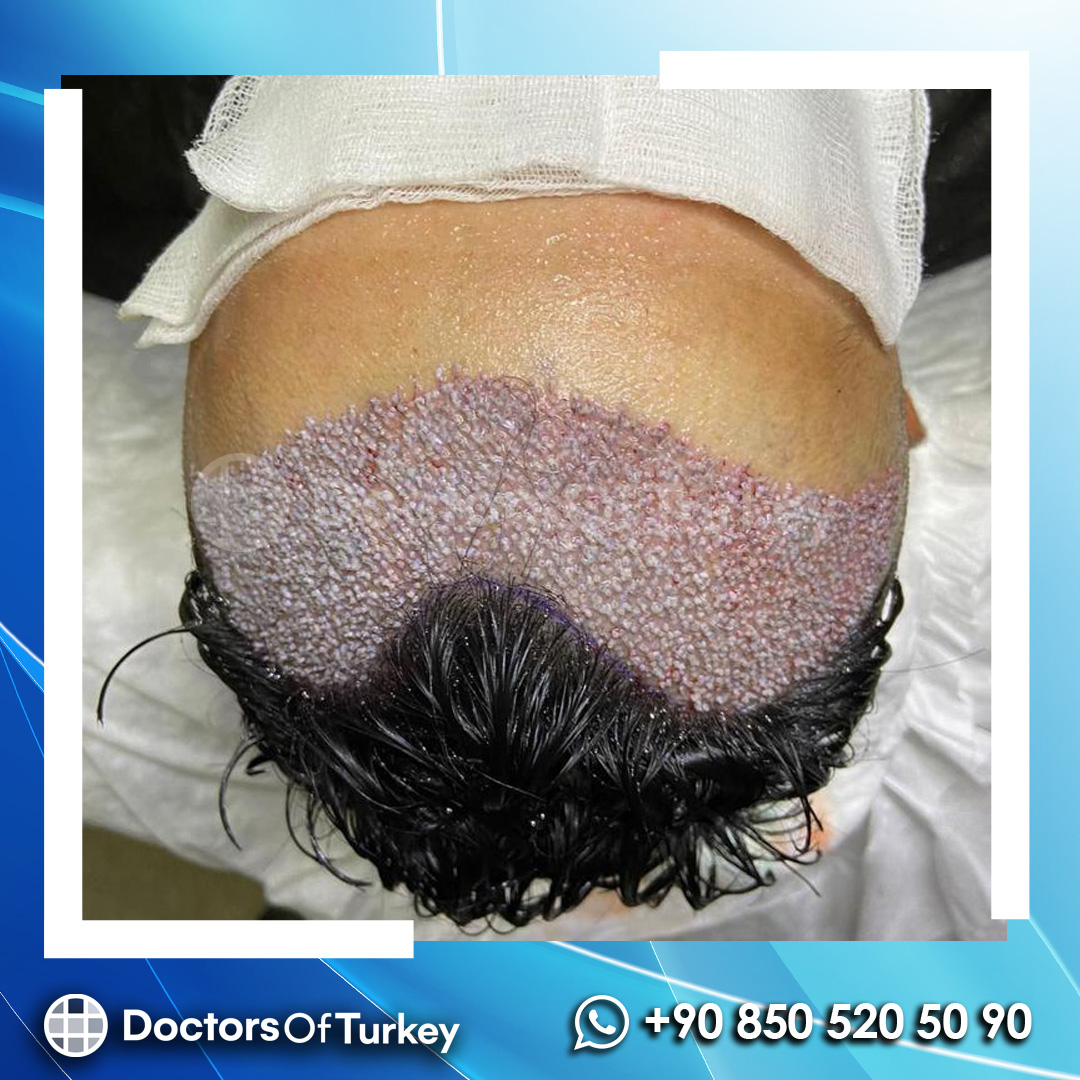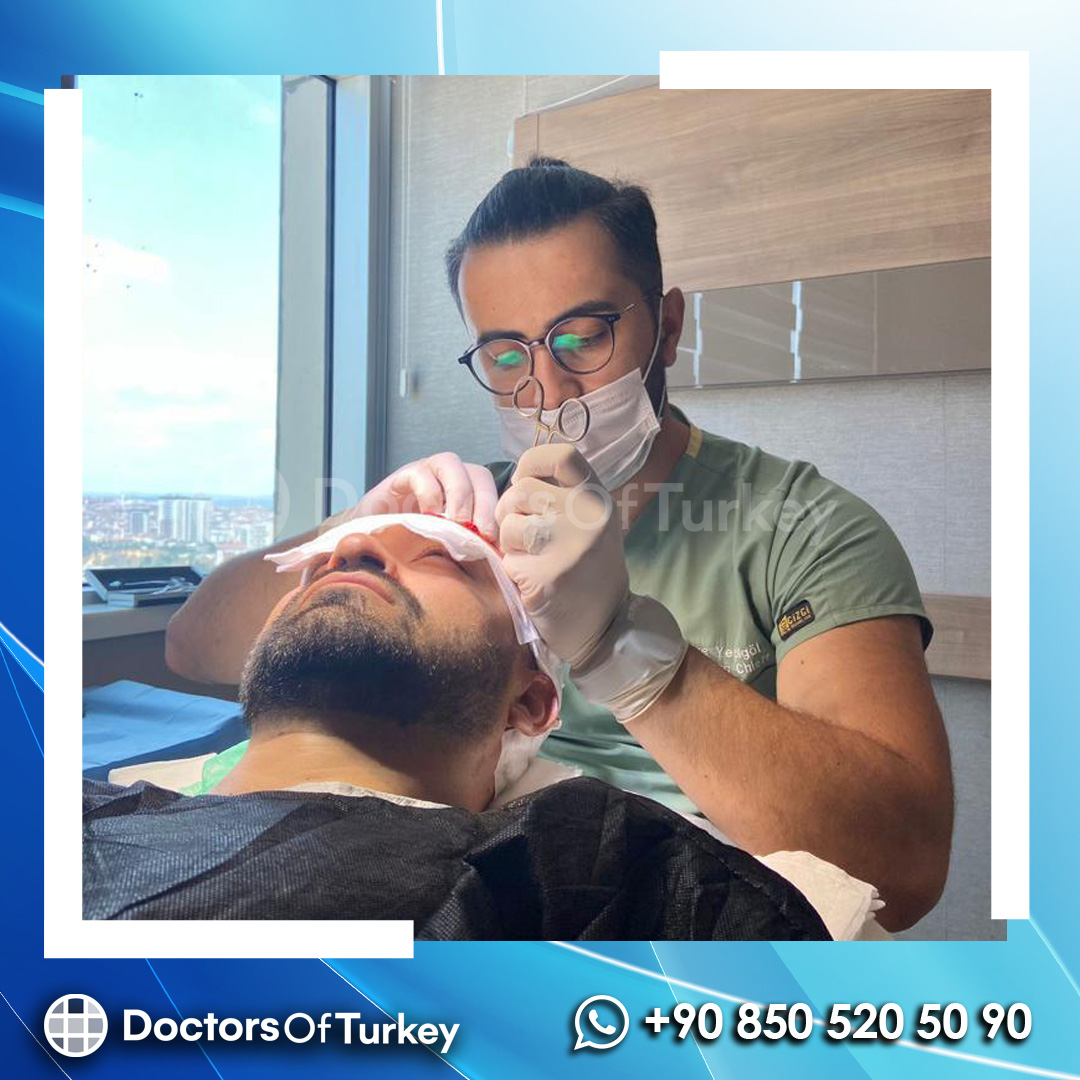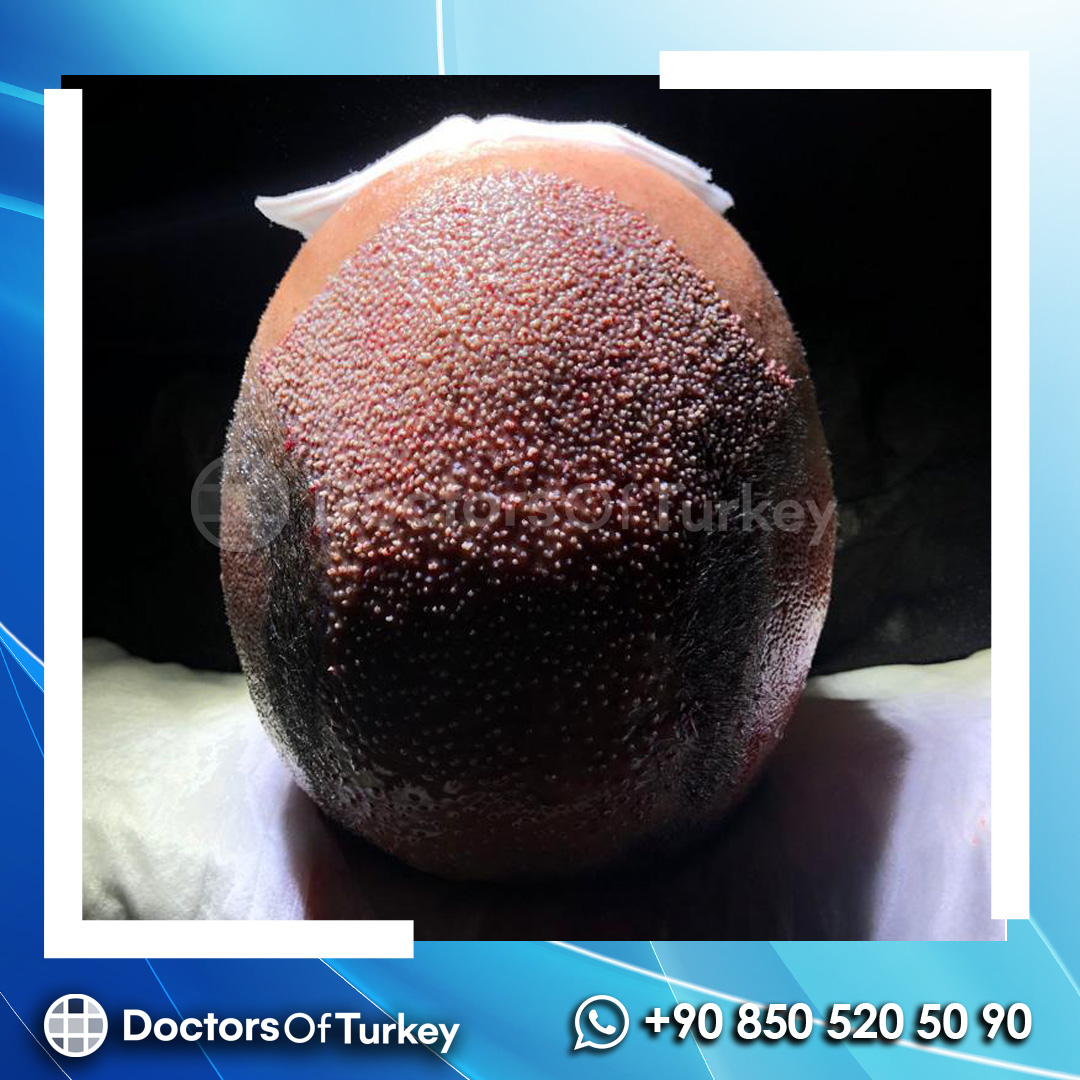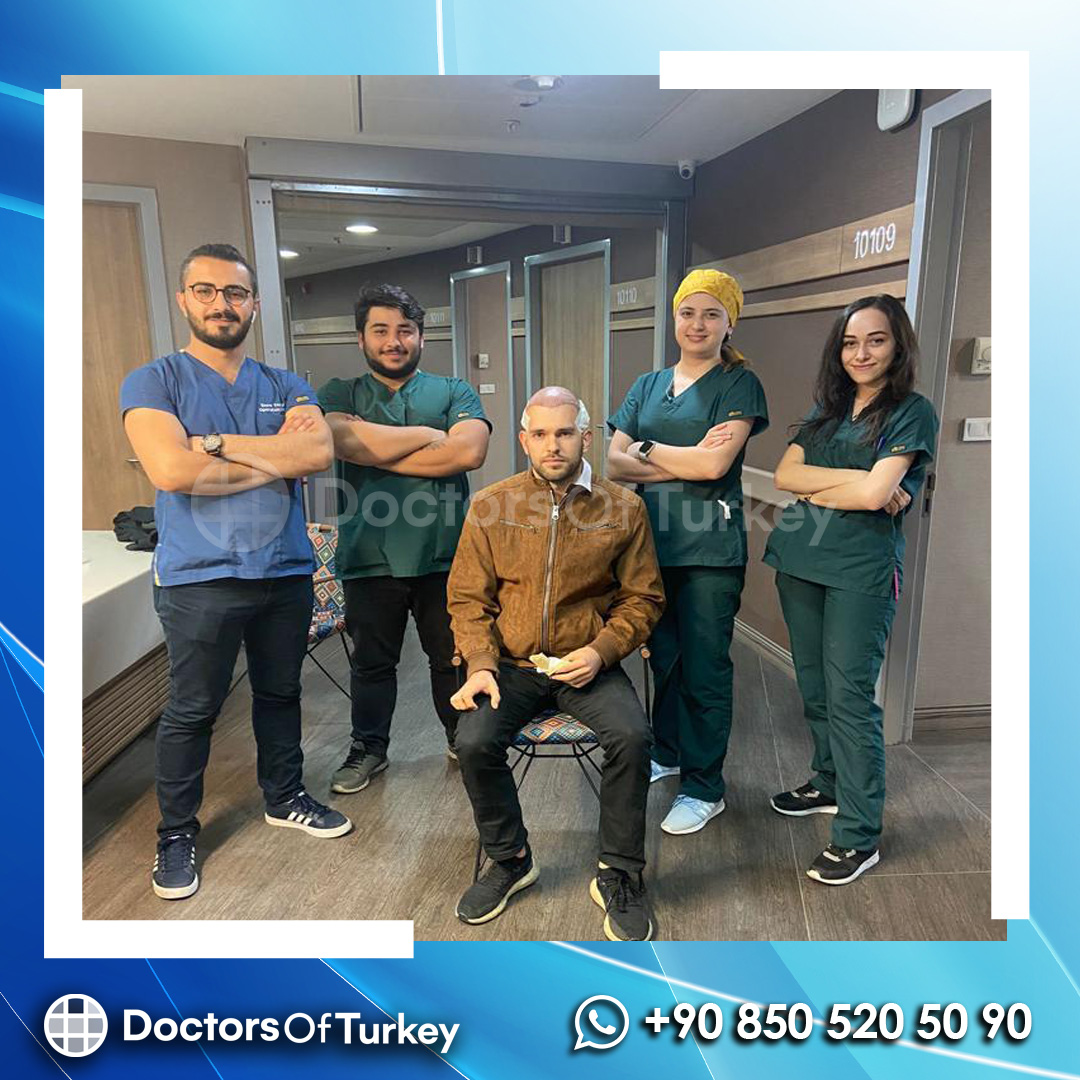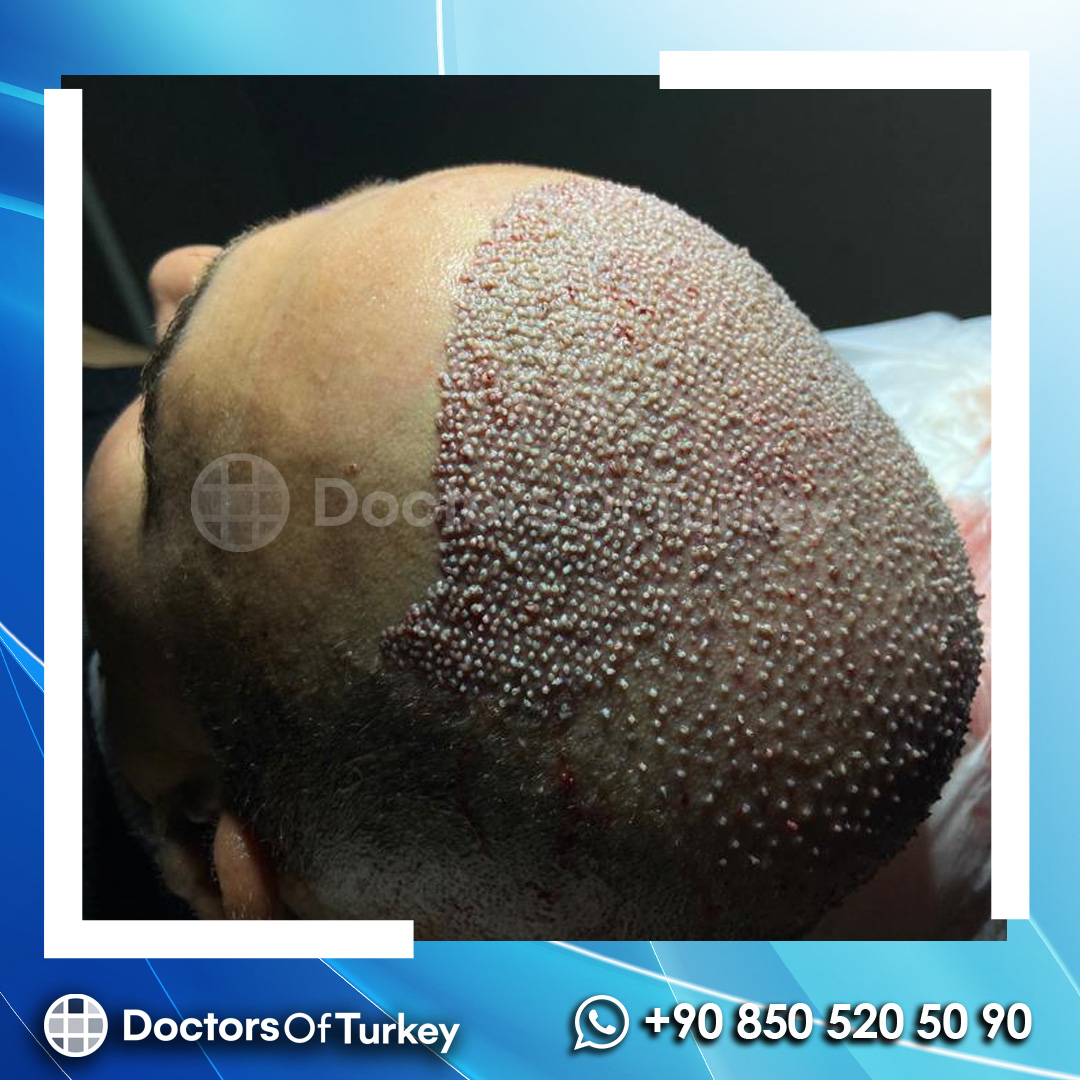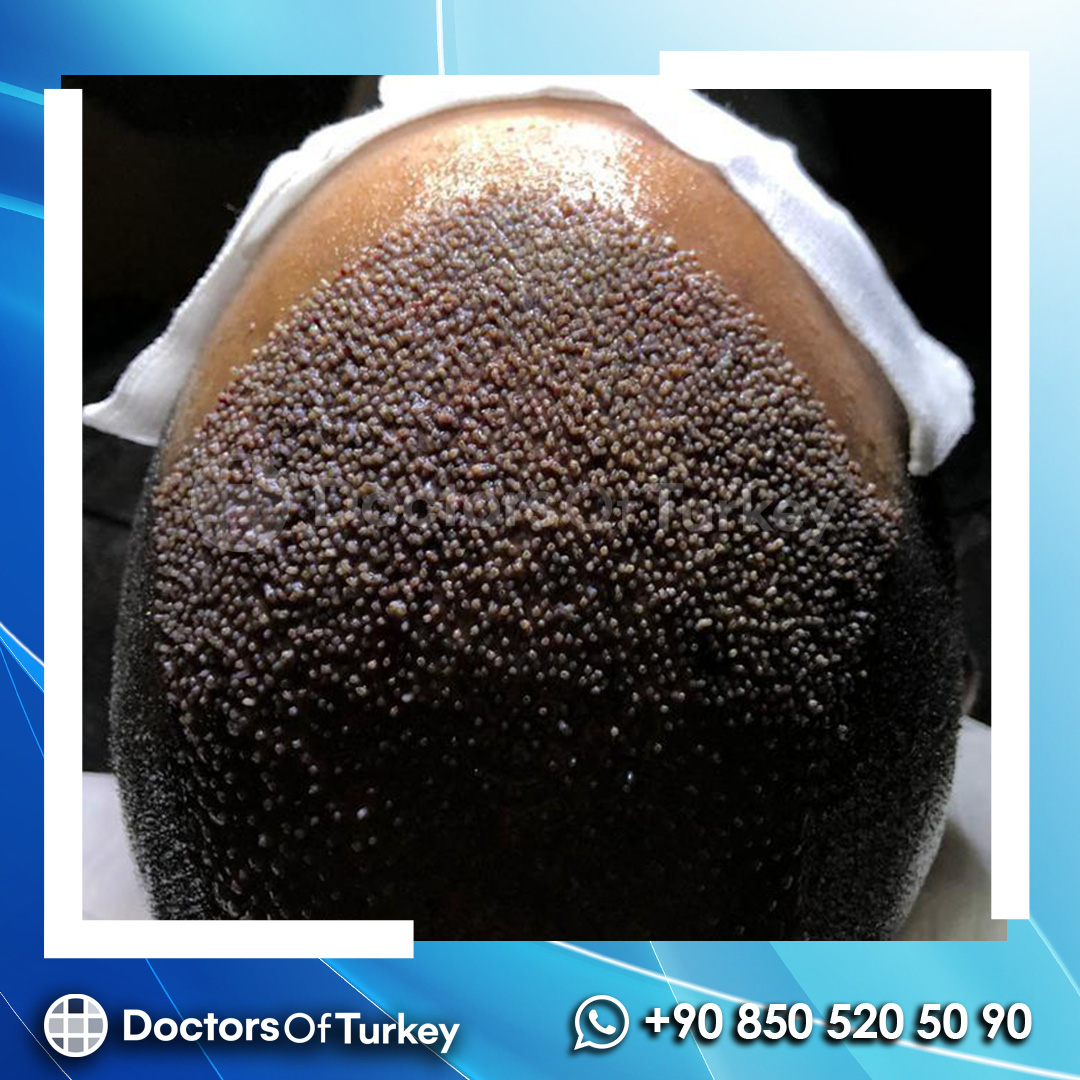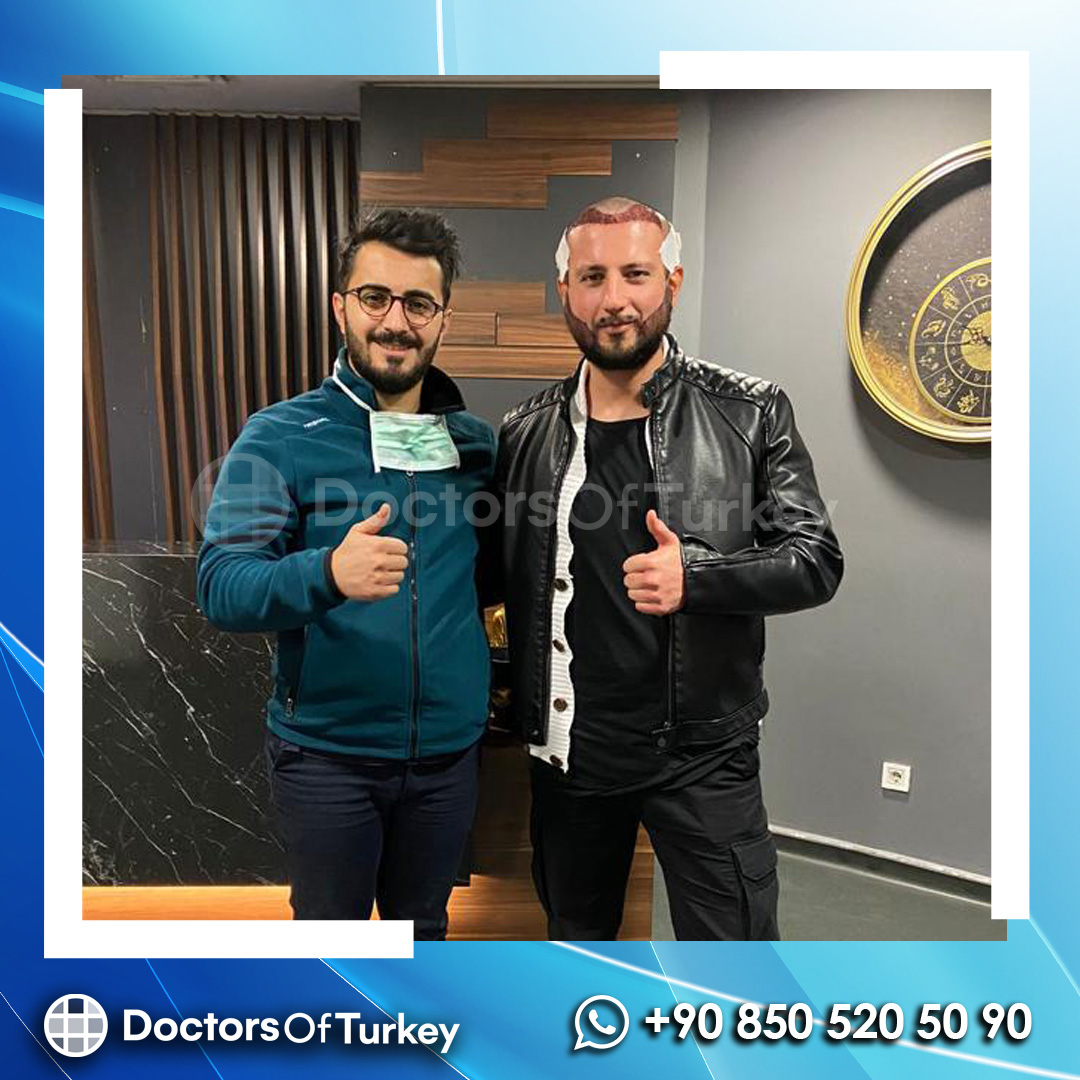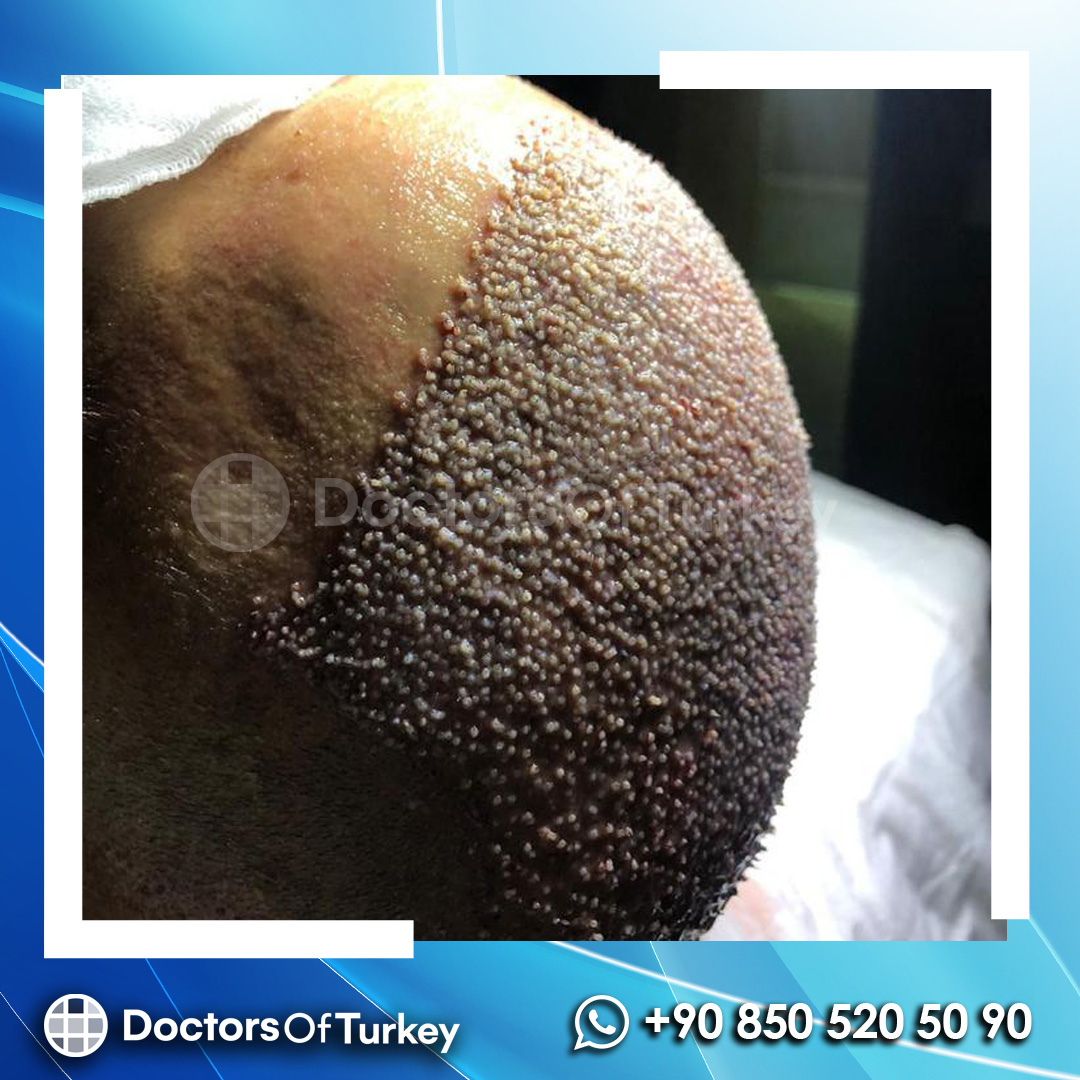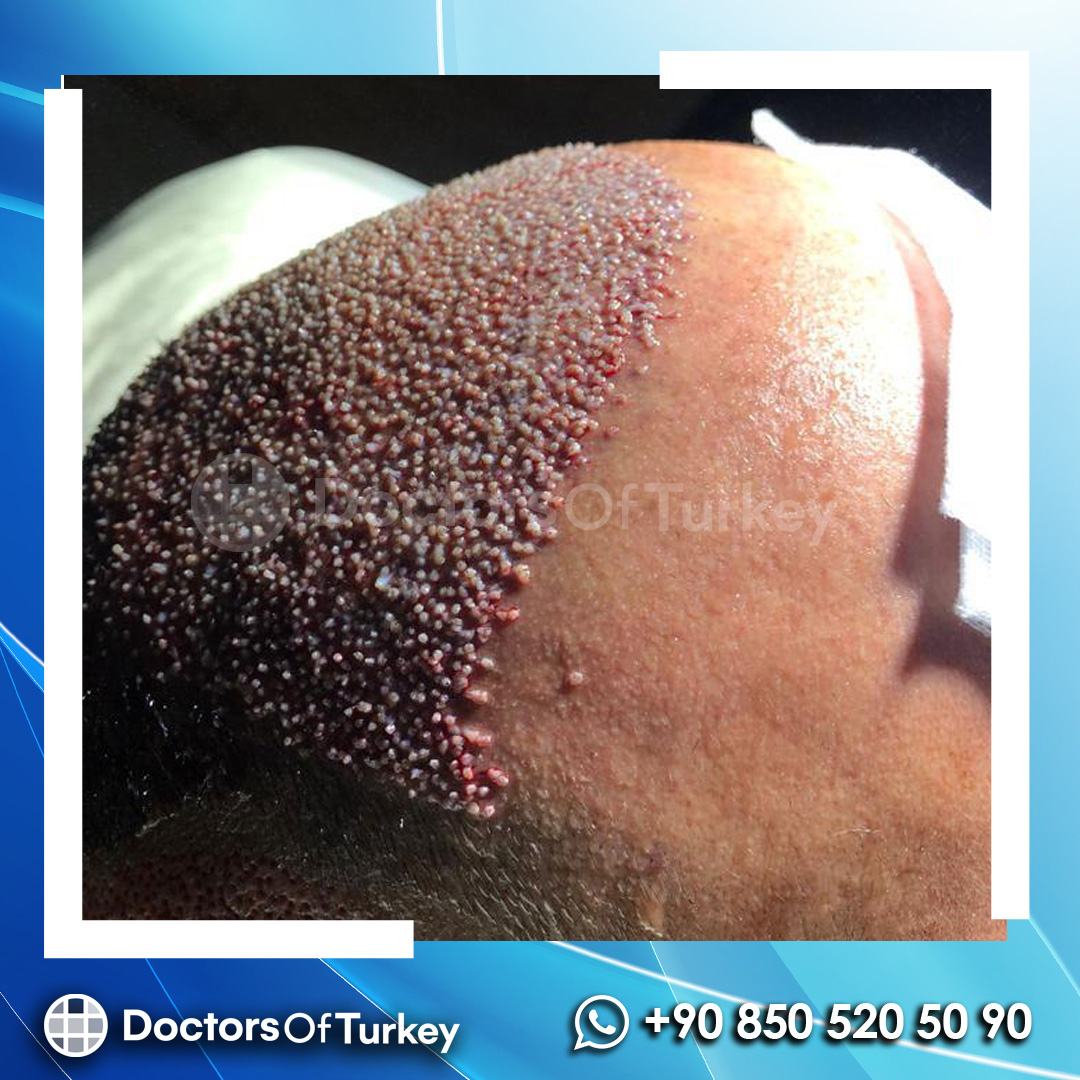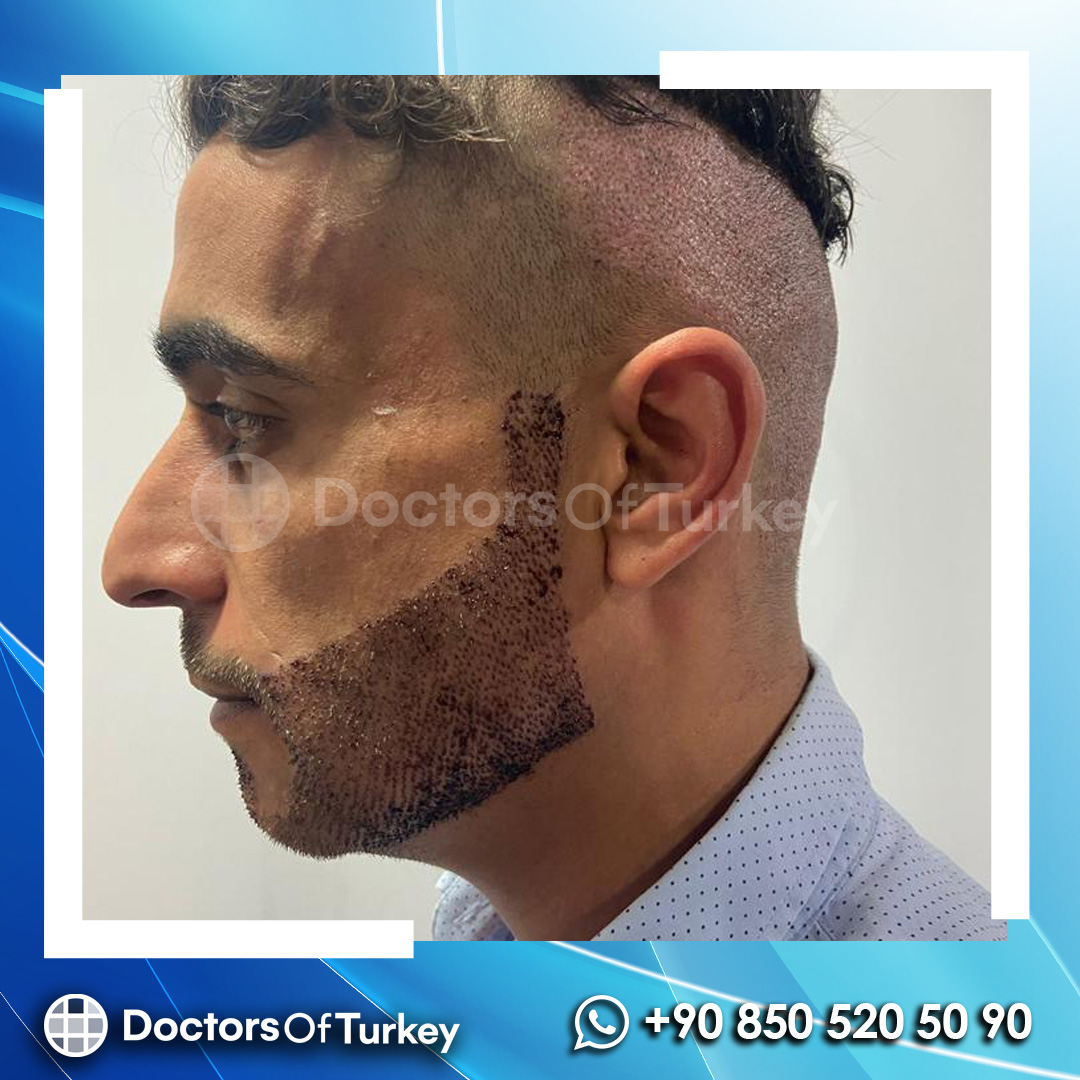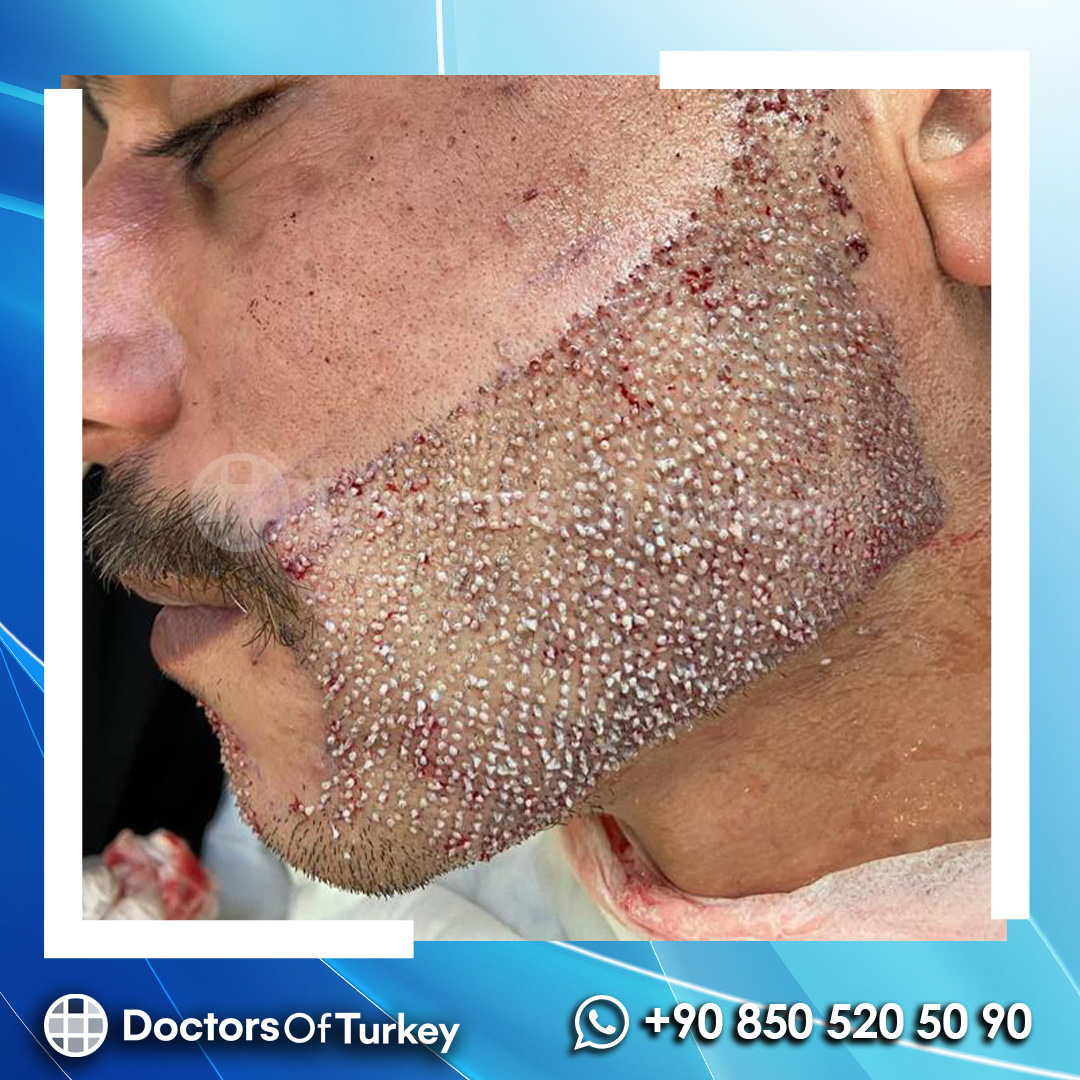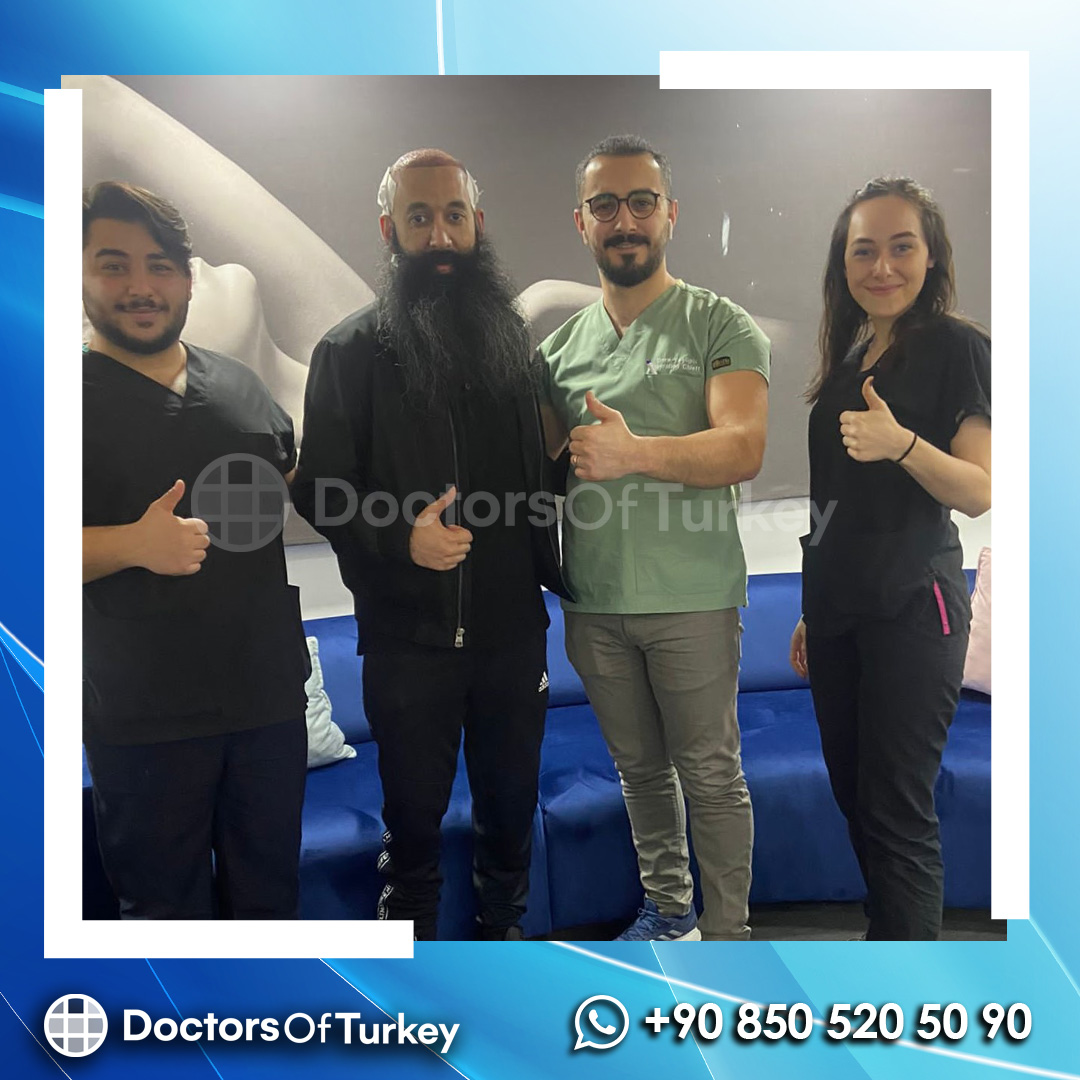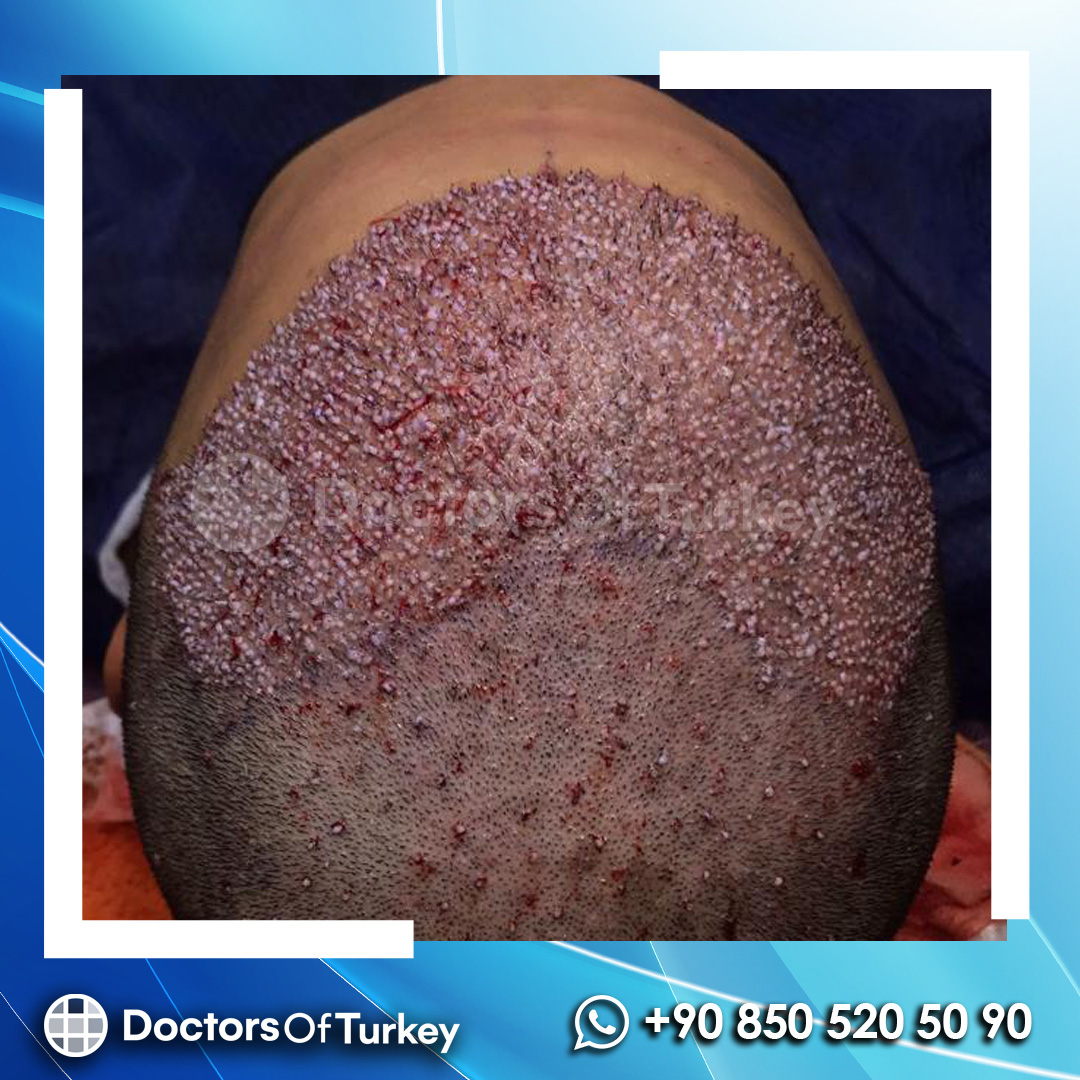Hair Transplant
What is Hair Transplantation?
Planning in hair transplant operations is completely personalized. Tissue transplantation of healthy hair follicles that do not shed on the upper part of the nape, using different methods, to the open areas on the scalp, or to the completely opened area is called hair transplantation. The area where the roots are collected is a kind of safe area that is coded not to fall out from birth. In cases where the hair follicles on the nape are not sufficient, hair follicles can be taken from the ear, back or chest, and sowing can be done. Since hair transplantation is a tissue transplant in itself, hair transplantation can only be done with the roots taken from the person's own donor area. Otherwise, the body sees the hair follicles taken from someone else as a foreign tissue and the defense system attacks.
Hair transplantation can be applied not only to male pattern hair loss, but also to areas such as gaps formed after trauma or disease, scars, burn marks and post-operative suture marks.
Hair transplant operation is an operation performed with microsurgical methods under local anesthesia. For this reason, it must be done under the control of a doctor and in a hospital environment, under sterile conditions.
Hair Transplant Information Guide
What are the Causes of Hair Loss?
Hair throughout history; It has been a symbol of health, vitality, strength and attractiveness. For this reason, hair loss can cause significant problems for both men and women. Worldwide, approximately 60 percent of men and 50 percent of women face the problem of hair loss. Hair loss is frequently seen in both men and women due to reasons such as stress, unhealthy lifestyle, rapid weight loss and unhealthy diets, pregnancy, hormonal changes, serious health problems. Hair transplantation offers a permanent solution for men and women who suffer from hair loss due to similar reasons. Techniques and methods used in hair transplantation have developed recently. However, satisfactory results are obtained and it allows the natural appearance of the individual to be preserved.
Hair is a very important factor on individuals in terms of both their psychological and physical appearance. Appearance not only increases the self-confidence of individuals, but also affects their social lives. Individuals who want a younger appearance prefer to have a hair transplant. Hair transplantation is a definite and natural operation performed as a solution to the problems of people who experience permanent hair loss due to hair loss. Although hair loss can be reduced or prevented with various hair treatments such as hair laser, permanent solution hair transplant operation is performed in people who have experienced intense hair loss.
When did Hair Transplantation Applications Begin?
The first hair transplant in history was performed by Diegonbach in 1822. In the history of hair transplantation, which dates back to 1822, many unsuccessful methods have been tried, but success has been achieved with the developing technology.
To Whom Hair Transplantation Can Be Applied? Am I the Right Candidate?
Like all other aesthetic applications, hair transplantation is a procedure that requires many criteria. Anyone who meets the hair transplantation criteria can have hair transplantation with a technique determined together with the doctor. Various treatment techniques have been developed in hair transplantation from past to present. The operation is planned by determining a hair transplant method according to the needs of the person first and then the request.
Hair transplantation results may differ according to the technique used, today it has become possible to obtain successful hair transplantation results in a short time. In the past, grafts were taken with the FUT method in a laborious and painful way, but today, with FUE Hair Transplantation techniques and DHI Hair Transplantation techniques, maximum grafts can be taken in a shorter time without pain and without surgical scars.
The criteria below show that hair transplantation is applicable;
- Completed physical development (over 18 years old),
- People who experience hair loss due to genetic factors and hormones,
- People who have trouble on the scalp due to burns or wounds,
- People with sufficient number of hair follicles in the donor area,
- People who have had a hair transplant before but are not satisfied, their hair is sparse or not dense enough,
- Those who cannot spare time for care and therapy and want a shortcut,
- People who experience hair loss or thinning due to different diseases,
- persons who are not pregnant,
- People who do not have heart or chronic diseases.
If there is no other problem as a result of blood tests and other techniques, hair transplantation can be performed in people who have sufficient hair follicles in the donor area under the control of a doctor.
Hair Transplantation should not be applied to whom?
- Not completed physical development (under 18 years old)
- Individuals with chronic diseases, heart, blood pressure, kidney, liver failure,
- Those with cancer derivative diseases,
- Individuals with panic attacks
- pregnant women,
- Individuals who do not have hair at the donor point and are completely bald,
- HIV positive or hepatitis C positive individuals,
- Individuals whose values such as blood pressure, diabetes and diabetes are not normal,
- Individuals with signs of hemophilia on a blood test.
If you are looking for a hair transplant operation and want to know which one is the best option, just contact us. After a quick examination by our specialist doctors, you will have all the answers you need.
Which Techniques Are Used in Hair Transplantation?
- Unshaven Hair Transplant
- FUE Hair Transplant
- Sapphire FUE Hair Transplant
- DHI Hair Transplant
- DHI Pro Hair Transplant
Which Treatment Methods Are Used in Hair Transplantation?
There are different treatment methods applied in hair loss.
Drug treatments,
PRP (Platelet rich plasma)
It is the process of separating the plasma of the blood with a special process and giving it back to the body by injection after a small amount of blood is taken from the person's body.
Mesotherapy
With mesotherapy, vitamins, minerals and amino acids that hair needs are injected into the scalp.
Ozone Mesotherapy
Ozone gas is used in this mesotherapy treatment method. It is applied to the individual by mixing multivitamins with bard steam. Cell regeneration is aimed by increasing blood flow.
Growth Factor,
In the Growth Factor application, growth factors such as vitamins and proteins required by the hair are applied to the scalp.
Hair Laser
It stimulates the hair follicles and increases blood circulation, making the hair stronger and healthier looking.
How Long Does Hair Transplantation Take? How Many Days Should Those Coming From Abroad Reserve For This Operation?
Hair transplant operations take an average of 6-8 hours. The first hair wash is done in the hospital on the 3rd day after the operation. Those coming from out of town or abroad should stay for 2 nights and 3 days. There is an operation process planned as a hair transplant operation on the first day, resting on the next day, and hair washing on the third day. After the first wash, that is, after the third day, you can return to social life.
Things to Consider Before Hair Transplant Operation
- Quit smoking 7 days ago, caffeine, green tea and alcohol 3 days ago.
- Aspirin, as a drug with high blood thinning properties, may cause excessive bleeding during the procedure. If there is a drug that you cannot stop due to health problems, although it is a blood thinner, you should definitely inform your doctor about it.
- When deciding on your operation day, make it coincide with a period where you can rest for at least the next 3 days.
- Make sure you have a good breakfast on the day of your operation. If your operation is in the afternoon, choose a light menu.
- Be sure to wear a button-down shirt or a zippered sweatshirt. Do not choose turtleneck sweaters and clothes that you will have to wear over your head. This can cause damage to your hair roots.
- Be sure to be at the clinic at the time specified for you.
Preparation for Hair Transplant Operation
If we consider the time from the moment you enter the clinic to the local anesthesia stage as a preparation stage, the procedures to be performed in the hospital are as follows;
Tests
Some examinations are carried out to determine whether the patient has a disease that prevents him from undergoing an operation. While the blood draw takes a maximum of one minute, the results are available until the other procedures are completed.
- Blood test
- HIV
- hepatitis B
- hepatitis C
- hemogram
- PT (bleeding time)
Information on Graft Quality and Process
After the examinations are done, Medifulya's specialist doctors are informed. In this process, while the patient is psychologically prepared for the operation, on the other hand, information is given about hair transplantation methods, what should be considered before and after the operation, and how the quality of the graft affects the success rates. Here, the goal is to share natural results and to ensure that expectations are fully purposeful instead of unrealistic information presented to people for marketing purposes in advertisements.
Planning of Hair Transplantation
First of all, your expectations will be evaluated with the doctor who will perform your operation. It will be determined whether your expectations can be realized with technical information. Other alternatives that can be applied will be presented to you verbally and in writing. The distribution of the hair to the regions will be planned based on the hair design and the agreed number of purchases. Before the local anesthesia process starts, the last step is to shave the hair and put on the patient's apron in the special room allocated to you. You are now ready for the operation!
Hair Transplant Processes | Basic Stages of Hair Transplantation
Hair transplantation operation is carried out in five basic stages; determining the front line of the hair, numbing the scalp, collecting the hair follicles, opening the channels and finally adding the roots to the opened channels.
First Stage: Determination of the Hair Front Line
Depending on the drawing of the operation plan and algorithm from your photographs taken at the first stage, this stage is the determination of the hairline in the front part of your hair. Hair front line should be done by specialist doctors who have experienced thousands of hair transplants. Every person has a unique anatomical forehead structure, so the front hairline line is personal. The most important point to be considered while determining the front line in hair transplantation is to protect the muscles in the forehead and not to damage them. In determining the front hairline – FHL starting line; A height of 6.5-8 cm is used from the middle of the eyebrow upwards. It was determined as 7-8 cm in men and 5.5-6.5 cm in women. In young patients, this line can be lowered, but a hairline less than 6.5 cm should not be preferred. Frontal anterior hairline – The shape of FHL is also important. Decisions are made according to head anatomy and gender. Flat and Crescent FHL are mostly preferred by women. Determining the frontal anterior hairline-FHL does not mean that hair transplantation will be done from here. For hair transplantation, the adequacy of the number of hair to be taken from the donor area, the patient's face and skull structure, the patient's age and gender, and the patient's expectations from hair transplantation are extremely important. If the person who will undergo the operation makes a request for a front line that is not suitable for him, the medical obligations are explained and he is informed about the most natural line that can be created for him.
Second Stage: Anesthetizing the Scalp
During the operation, local anesthesia is used to numb the scalp. In the local anesthesia stage, the anesthetic agent is not injected into the scalp, but with the help of a device with a pressurized pump. The anesthetic substance is sent under the scalp by spraying with pressure, thus causing numbness in the scalp.
Third Stage: Collection of Hair Roots
After the donor area, which we call the safe area between the two ears, which is coded not to fall out, is prepared for the procedure, the hair follicles are collected one by one with the FUE motor. In the meantime, it is very important that the roots are not damaged. Each of these roots, called grafts, contains an average of 2-4 hairs.
Fourth Stage: Opening the Channels
Channels are opened in the area to be transplanted for a natural appearance in accordance with the direction of hair growth. Opening these channels at the right angle, at the right frequency, at the right size and at the right depth affects the success rate of the transplanted hair seriously.
Fifth and Final Stage: Planting Roots in Opened Canals
The last step after removing the hair follicles and opening the channels is the process of planting the hair follicles / grafts in the opened channels. The collected roots are placed one by one into the opened canals at 40-45 degree angles. After the hair follicles are carefully placed in the canals, the operation is completed.
Things to Consider After Hair Transplant Operation
- After your hair transplant treatment, there is no visible improvement, especially in the first three months. It takes between 12 and 18 months for the hair to adapt to the area where it is transplanted, to grow and to meet expectations.
- The process is not limited to the realization of the treatment by the doctor. There are factors that the patient should pay attention to after treatment. Smoking as little as possible, consuming natural and beneficial foods, taking care of your hair regularly, using vitamins and nourishing care products that support hair loss treatment will strengthen your hair and make it grow in quality. A large part of the dissatisfaction experienced after the hair transplantation treatment is due to the fact that the hair follicles that are not well taken care of after a successful transplantation do not grow. Post-hair transplant care is very important for you to get the best results.
- The prescription given by the specialist must be strictly followed.
- In the first two days after planting, the person must rest.
- Leaning forward movements should be avoided.
- In the first 3 days, the transplanted area should not be itchy or washed.
- A different hat should not be used other than the hat given after hair transplantation.
- For the first 3 days, only front buttoned clothes should be preferred. Shirt or sweatshirt with zipper is the right choice.
- The first three days after hair transplantation is the period that needs the most attention. Your head should not be rubbed anywhere. Because the transplanted hair grafts can be dislodged in case of any friction.
- Heavy work should not be done; Smoking, alcohol, herbal tea, cannabis, aspirin-like blood thinners, and energy drinks should be avoided for at least 3 days.
- Standing too long can lead to swelling in the eyes and face. The hair band given after the operation will reduce the risk of swelling. If you will be standing for a long time or traveling, the hair band should not be removed for 5 days.
- The first week should definitely not lie face down.
- No hard blows to the head should be taken for at least 13 days after the operation, and care should be taken not to hit the head area.
- After hair transplantation, itching may occur in the transplantation area. The scalp should not be itchy for the first 15 days.
Contact with Water After Hair Transplant Operation
- The first hair wash will be done by a specialist doctor at the hospital on the 3rd day.
- 3.-10. Washing described by the specialist between days should be repeated every day.
- Hair should be washed every day with the recommended shampoo and lotion for 10 days following the first wash.
- On the 13th day, you should not take a shower with very hot water and do not take a shower under pressurized water until the peeling is washed.
- Sports hats and hard hats can be used after the 13th day flaking wash, but 2 months should be waited for those made of woolen and nylon-like material such as berets that fully cover the head.
- For those coming from outside the city and abroad, a detailed video link describing the peeling washing is sent and the person can do the peeling washing himself.
- You should not enter the sea, pool and bath for 1 month. Sauna should not be used.
- Within 1 month after the last wash, there will be shedding in the transplanted hair. This is to be expected and should not be a concern.
Physical and Sports Activities After Hair Transplant Operation
- You should not lean forward for 5 days, and activities performed by leaning forward should be avoided.
- Heavy loads should not be lifted for 7 days.
- You should not have sexual intercourse for the first 13 days after hair transplantation.
- After 15 days, light-paced walks can be done.
- 1 month should be waited for gym activities.
- It is also necessary to wait at least 1 month for activities such as astroturf matches.
Hair Treatments After Hair Transplant Operation
Before 1 month, medical treatments such as PRP, mesotherapy, growth factor, hair laser and hair treatments applied directly on and inside the scalp, including anti-shedding sprays, should never be done.
Hairdresser Procedures After Hair Transplantation
- Machine shaving should not be done during the first 6 months.
- Hair should be shortened with scissors for the first 6 months.
- Although hair dyeing is not recommended even for healthy hair, if there is such a need, it should be waited for at least 6 months.
Why Turkey is Your Best Option for Hair Transplantation?
- Turkey, which stands out with its qualified manpower and health infrastructure and technology in the field of health, has further strengthened its place in medical tourism. Turkey, which offers both a cost advantage, the opportunity to travel and a quality technological infrastructure, is one of the preferences of international patients. Being treated in Turkey is up to 60% more convenient than in many European countries.
- Having a hair transplant operation in Turkey is the best option for you;
- It is among the first countries to offer health tourism services and has gained experience in this regard.
- Turkey is considered among the world's leading countries in the field of health.
- It provides a service that does not compromise on quality but is affordable.
- There are various tourism opportunities that will positively affect the demand for health services (cultural tourism, faith tourism, sea tourism, nature tourism, health-spa tourism, etc.).
- The fact that Turkey is in a good position in the service sector in general and the service sector has a high positive effect on health tourism.
How are the Hair Transplant Costs in Turkey?
“Hair Transplantation prices in Turkey”, “Beard Transplantation prices 2022” Hair transplantation prices vary according to the method used and the number of roots planted. Pricing per graft, which is the most common form of pricing in the world, is not very common in Turkey. Hair transplant prices are generally offered in the form of per-operation package prices. Prices vary according to the clinic where the operation is performed, the details of the package and the quality of the service provided.
Curiosities About Hair Transplantation
What is Graft?
Although the graft may have different meanings in medicine, it is defined as the tissue taken from any part of our body without vein and nerve connections to be transferred to another part of our body. In the meaning used in hair transplantation, the graft is the general name given to the nourishing roots to which the hair is attached. One graft can contain 1 to 4 hair follicles. The ratio of skin in the graft determines the number of hair follicles. For example, 2000 grafts means 4000-6000 hair follicles.
The pricing of the hair transplant treatment is also a determining factor in the hair and scalp structure of the person, in the purchase and calculation of the graft. Before hair transplantation, graft calculation is done by specialist doctors. How many grafts the person needs and the amount of grafts in the area where the graft will be taken are checked, whether your donor area is sufficient or not.
With the developing latest technologies, it is possible to transplant up to 7000 grafts to a person if the hair follicle health in the donor area is good. Hair transplantation with 7000 grafts corresponds to approximately 17,500 hair strands, but this is a long and laborious process.
Can We Perform Hair Transplantation in Another Area?
Hair transplant operation is a surgical operation and tissue transplantation is performed. Unsuccessful operations will not be reversible, so they must be performed in a hospital environment, by specialist doctors, under sterile conditions. Otherwise, the risks of infection and contagious diseases arise.
What should be the purpose of hair transplantation?
When the donor area is used efficiently, the most natural result occurs for the patient. The front line design is planned specifically for each individual. For hair transplantation, the adequacy of the number of hair to be taken from the donor area, the patient's face and skull structure, the patient's age and gender, and the patient's expectations from hair transplantation are extremely important. If the person who will undergo the operation makes a request for a front line that is not suitable for him, the medical obligations are explained and he is informed about the most natural line that can be created for him.
When can I return to work after hair transplantation?
The patient can return to social life after the first wash, that is, after the third day. If you are not working in a physically demanding job, you can return to work in a few days. However, for 1 month, hats, helmets, hard hats, etc. It is important not to use accessories.
What is the Success Rate of Hair Transplantation?
- With the developing technology, hair transplantation treatments are achieving great success. Generally, this process is used to restore hair in case of excessive hair loss, natural thinning, or hair loss due to an injury. Between 10% and 80% of the transplanted hair is suitable for growth and growth.
- People with dormant hair follicles may experience less effect from the transplantation process. However, with the plasma therapy applied by Medifulya's specialist doctors, the transplanted hairs can have an effect of up to 75 percent.
- Hair transplantation treatment is not applied in some cases. Since existing hair follicles are used as donors in the transplant, it does not seem possible to process hair loss due to chemotherapy or other drugs under current conditions.
Is it understandable that I had a hair transplant?
One of the most important features of the hair transplant operation, in which modern techniques are used, is that it primarily aims to restore the old appearance of the person as if he had not experienced hair loss. After the patient undergoes the hair transplant treatment and recovers from the ensuing healing process, the hair transplant takes on an incomprehensible and natural appearance. Thanks to the developing technology, there is no unnatural appearance.
Will I Feel Pain During Hair Transplantation?
The operation is performed with local anesthesia. Therefore, pain, aches and pains are not felt.
Does the patient need medication after hair transplantation?
A prescription is given to the patient by the doctor. The patient should use the drugs necessary for treatment according to the doctor's advice. The maximum duration of drug use is 5 days.
Does the patient need to use a special shampoo after hair transplantation?
Special procedures are applied in the treatment of hair transplantation, and therefore, attention should be paid to contact with water. On the third day after the operation, the first wash is performed by the specialist doctor. Especially on the thirteenth day, washing hair is one of the most important points to be considered. A correct application can be carried out by the patient with the shampoo recommended by the doctor. These shampoos not only prevent irritation of the scalp and canals, but also contribute to the rapid growth and nutrition of the hairs.
When will my hair start to grow?
The hair transplant operation lasts between 6-9 hours and the patient comfortably waits for the operation to be completed under local anesthesia. In the 6th month, approximately 70% of the hair will have grown. Hair regains the desired appearance 1 year after the transplant operation.
Does the transplanted hair fall out after the hair transplant?
During the hair transplant operation, the transplanted hair sheds for about 2 months, which is expected. Since the hair follicles are taken from the safe area that is coded not to fall out from birth, stronger and healthier new hair will grow in place of the lost hair over time. Just like normal hair, transplanted hair also thins over time.
Does the Patient Need a Second Session?
Hair transplantation operations can be completed with a single-session operation or more operations. The efficiency of the donor area, the width of the opening area, and whether the patient's hair loss continues are the main factors that determine the number of sessions.
Are There Risks of Hair Transplantation?
Hair transplantation carries risks just like any medical intervention. Although the hair transplant operation takes a short time and allows you to return to social life early, there is a procedure that needs attention after the hair transplant procedure, so it is a long process. Depending on the degree of hair loss that the individual has been exposed to before the treatment, it may be necessary to undergo a hair transplant operation within a period of 1-2 years.
Infection and significant scarring are possible complications, but these complications are rare if performed by an experienced plastic surgeon in a hospital setting. After the hair transplant operation, pain, discomfort, mild bruising and swelling, which can be controlled with painkillers, may occur.






















